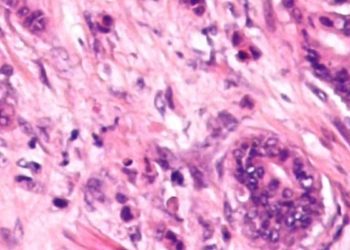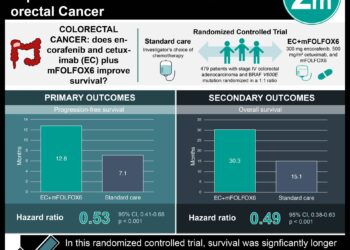European screening colonoscopy detection rates appropriate, but with overall low participation
1. Based on the initial analysis of this population-based randomized clinical trial addressing screening colonoscopies in several European countries, the results showed a positive outcome in regards to the adenoma and cancer detection rates. However, there was significant variability in participation rates and endoscopists’ performance.
2. The most common side effect after colonoscopy was abdominal pain. This occurred most frequently in those who received oxygen insufflation compared with carbon dioxide.
Evidence Rating Level: 1 (Excellent)
Study Rundown: Population cancer based screening programs exist in many countries. In addition to pap smears for cervical cancer screening, colonoscopies are used for colorectal cancer (CRC) detection and prevention. This trial aimed to investigate the participation rate, adenoma yield, performance, and adverse events of a population-based colonoscopy screening program in several European countries, as the first component of the larger trial done to investigate the outcomes of CRC screenings.
Routine colonoscopy used in colorectal cancer screening resulted in an appropriate rate of cancer and adenoma detection. However, participation rates varied greatly across countries, ranging from 22.9% to 60.7%. There were performance differences across endoscopists as well. The most common side effect after colonoscopy was moderate to severe abdominal pain. This occurred most frequently in those who received oxygen insufflation and not carbon dioxide. While the study did evaluate a generalizable cohort for other Europeans, the low participation rates may affect the final results of the study when attempting to determine the outcomes from CRC screenings.
Click to read the study, published today JAMA Internal Medicine
Relevant Reading: Effect of Flexible Sigmoidoscopy Screening on Colorectal Cancer Incidence and Mortality: A Randomized Clinical Trial
In-Depth [randomized clinical trial]: This trial had participants from Norway, Poland, Sweden and the Netherlands, and included all men and women aged 55 to 64 years with no history of colorectal cancer. Participants were randomized to colonoscopy screening group or no screening in a one-to-two ratio. Colonoscopies were performed from June 2009 to June 2014 and occurred at dedicated endoscopy centers. Pathologists were responsible for biopsy histopathology according to WHO guidelines. Participants’ abdominal pain during colonoscopy and 24 hours after was monitored. Study outcomes for this particular portion of the trial were participation rate, adenoma yield, endoscopist performance, and adverse event. Data was examined using an intention-to-treat analysis.
A total of 31 420 participants were randomized to the colonoscopy-screening group however only 40% (n = 12 574) underwent screening. These participation rates varied across countries, ranging from 60.7% in Norway to 22.9% in the Netherlands. The cecum intubation rate was 97.2%. Complications noted were one perforation, two post-polypectomy serosal burns, and 18 bleeds post-polypectomy. Moderate to severe abdominal pain commonly occurred in patients who were insufflated with oxygen vs. carbon dioxide (601 of 3611 participants for oxygen vs. 214 of 5144 participants with carbon dioxide; p < 0.001). Colorectal cancer was found in 62 individuals and 3861 individuals (30.7%) had adenomas. Of these, 1304 were high-risk adenomas. This is the first portion of the study, and additional follow up is necessary to determine the outcomes of colonoscopy screening versus no screening in this cohort.
Image: PD
©2016 2 Minute Medicine, Inc. All rights reserved. No works may be reproduced without expressed written consent from 2 Minute Medicine, Inc. Inquire about licensing here. No article should be construed as medical advice and is not intended as such by the authors or by 2 Minute Medicine, Inc.




![2MM: AI Roundup- AI Cancer Test, Smarter Hospitals, Faster Drug Discovery, and Mental Health Tech [May 2nd, 2025]](https://www.2minutemedicine.com/wp-content/uploads/2025/05/Untitled-design-350x250.png)


